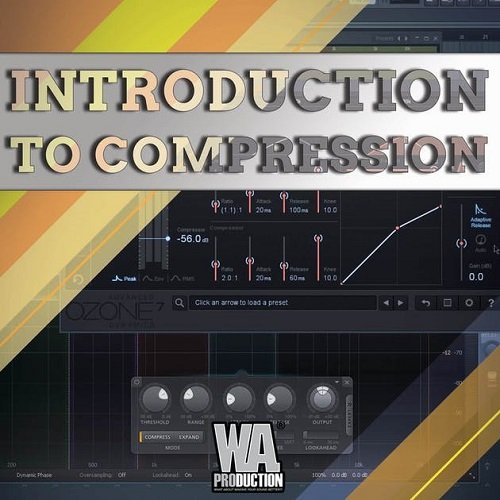WA Production Introduction To Compression TUTORIAL
Welcome to Introduction To Compression audio course by Brandon Gono. Here is what you will learn from the included Videos:
Video 1 – What is a compressor (08:18)
A compressor is effectively a fader that you can program so that it wiggles around in real time. The beauty of it at mixdown is that you can combat undesirable signal level variations that would otherwise prevent an instrument from maintaining its position in the balance.
Video 2 – Parameters of a compressor (17:15)
- Threshold: Determines the volume level at which the compressor will begin acting
- Ratio: Determines the amount by which material above the threshold will be compressed.
- Attack: Determines how quickly the compressor will react to sounds above the threshold.
- Release: Determines how quickly the compressor will return to a normal state when sounds fall back below the threshold.
- Gain: The knob that makes up with the attenuated signal.
Video 3 – Mixing with compression (20:34)
A supplementary video that shows how we can use compression to improve the mix.
Video 4 – Introduction to multiband compressors (03:05)
A multiband compressor is an elaboration on the basic concept of compression. A multiband compressor works by splitting the input signal into multiple frequency bands (usually three), sending each to a separate compressor, and then mixing the signals together again after compression.
Video 5 – Mixing with multiband compression (15:18)
Another supplementary segment that shows how multiband compressors are used on a song.
Video 6 – Introduction to Serial compression (12:08)
One variation on the standard compressor usage paradigm is to use multiple compressors on the same sound, chained one after another. This is called “serial compression,” and there are plenty of situations in which it’s a good idea. Often several compressors working as a team can get the job done better than one compressor.
Video 7 – Introduction to sidechain compression (10:43)
Some compressors offer a “sidechain” input. This is a secondary audio input that allows you to use a signal other than the input signal to control the action of the compressor. This second signal is called the “sidechain signal.”
A sidechained compressor behaves quite differently from a normal compressor. Rather than responding to peaks in the input signal, it responds to peaks in the sidechain signal. The dynamics of the sidechain signal are used to shape the dynamics of the input signal. If the sidechain signal goes over the threshold, then the input signal will be reduced accordingly.

